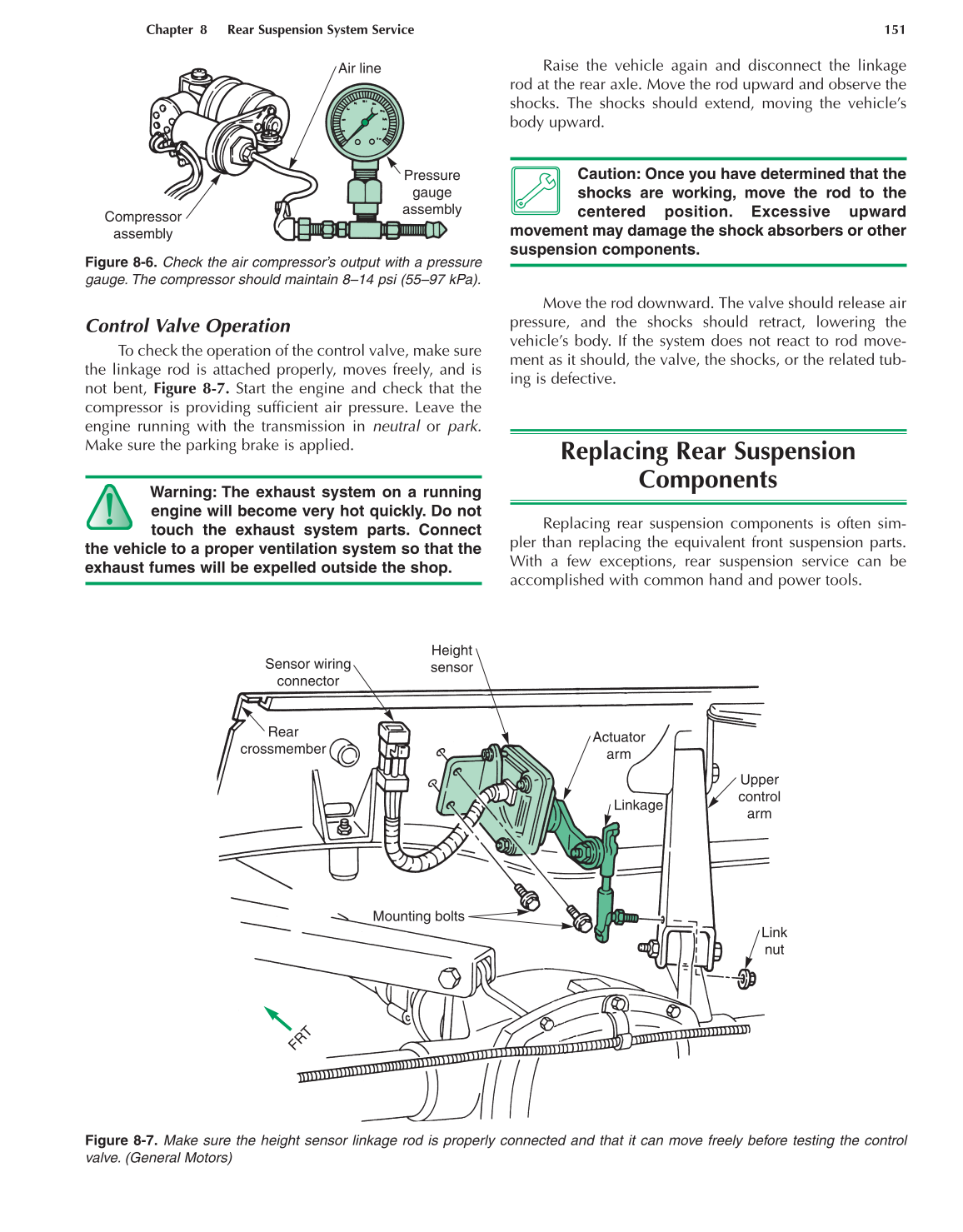Chapter 8 Rear Suspension System Service 151
Control Valve Operation
To check the operation of the control valve, make sure
the linkage rod is attached properly, moves freely, and is
not bent, Figure 8-7. Start the engine and check that the
compressor is providing sufficient air pressure. Leave the
engine running with the transmission in neutral or park.
Make sure the parking brake is applied.
Warning: The exhaust system on a running
engine will become very hot quickly. Do not
touch the exhaust system parts. Connect
the vehicle to a proper ventilation system so that the
exhaust fumes will be expelled outside the shop.
Raise the vehicle again and disconnect the linkage
rod at the rear axle. Move the rod upward and observe the
shocks. The shocks should extend, moving the vehicle’s
body upward.
Caution: Once you have determined that the
shocks are working, move the rod to the
centered position. Excessive upward
movement may damage the shock absorbers or other
suspension components.
Move the rod downward. The valve should release air
pressure, and the shocks should retract, lowering the
vehicle’s body. If the system does not react to rod move-
ment as it should, the valve, the shocks, or the related tub-
ing is defective.
Replacing Rear Suspension
Components
Replacing rear suspension components is often sim-
pler than replacing the equivalent front suspension parts.
With a few exceptions, rear suspension service can be
accomplished with common hand and power tools.
Pressure
gauge
assembly
Air line
Compressor
assembly
Figure 8-6. Check the air compressor’s output with a pressure
gauge. The compressor should maintain 8–14 psi (55–97 kPa).
Rear
crossmember
Sensor wiring
connector
Height
sensor
Actuator
arm
Linkage
Upper
control
arm
Link
nut
Mounting bolts
FRT
Figure 8-7. Make sure the height sensor linkage rod is properly connected and that it can move freely before testing the control
valve. (General Motors)
